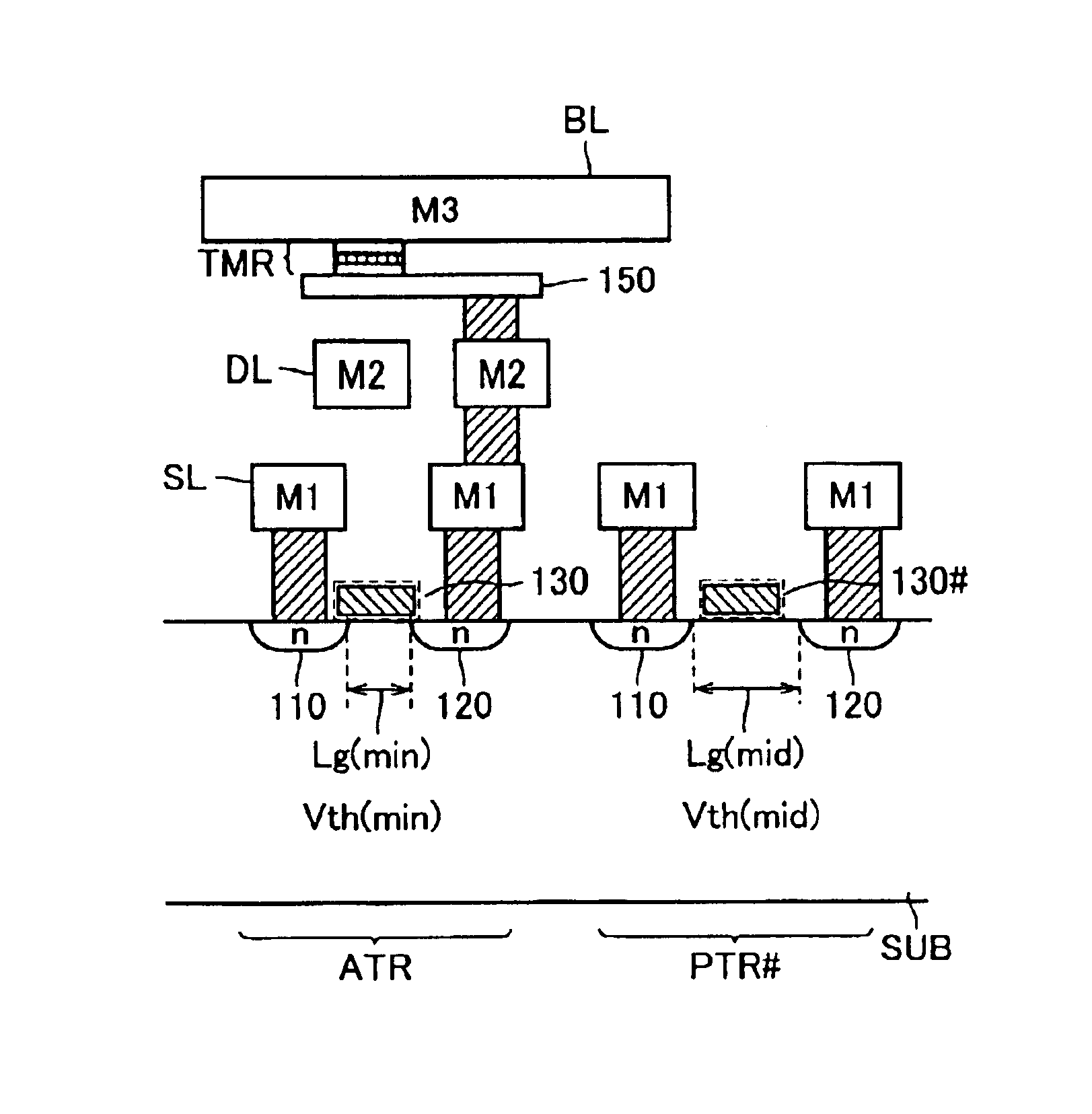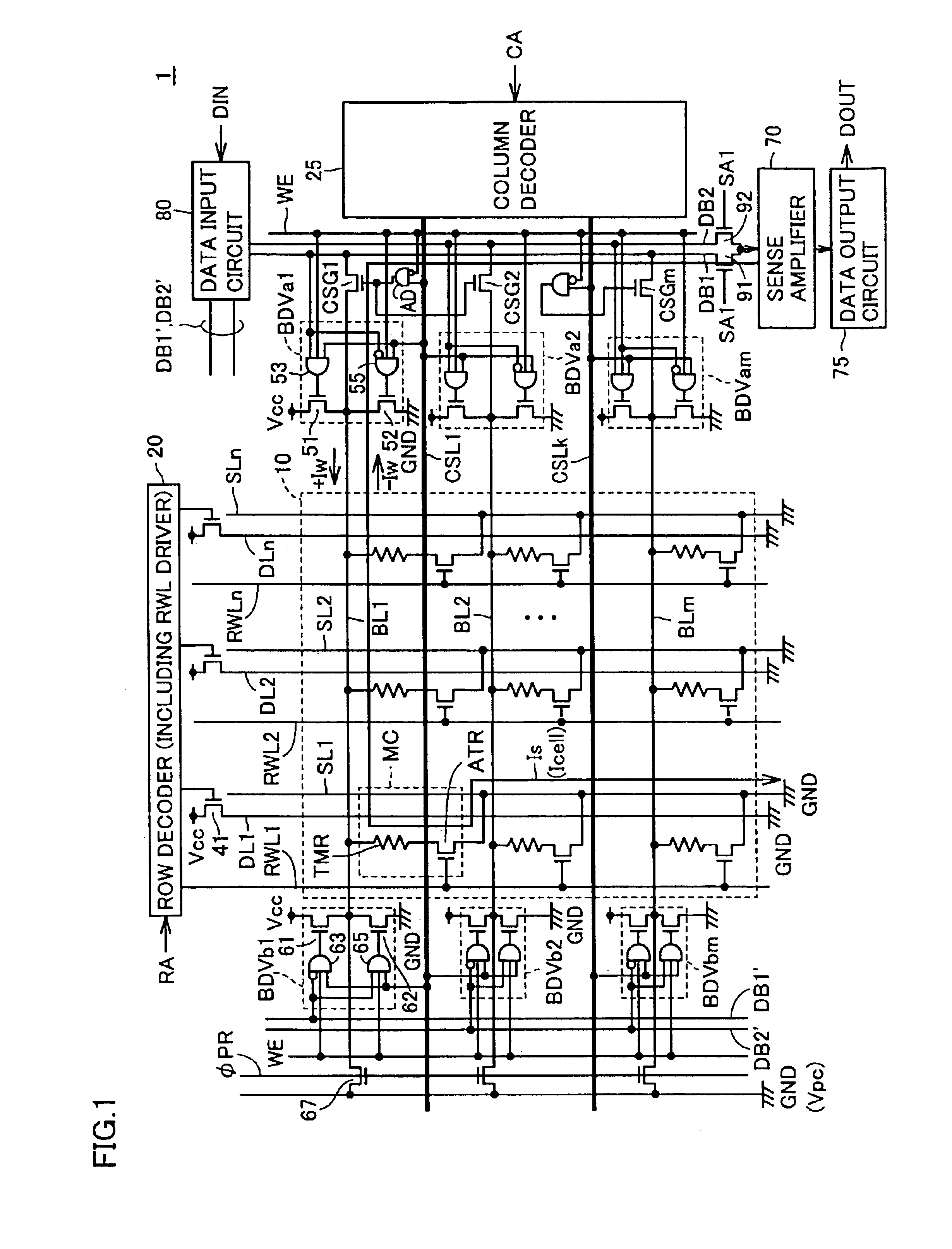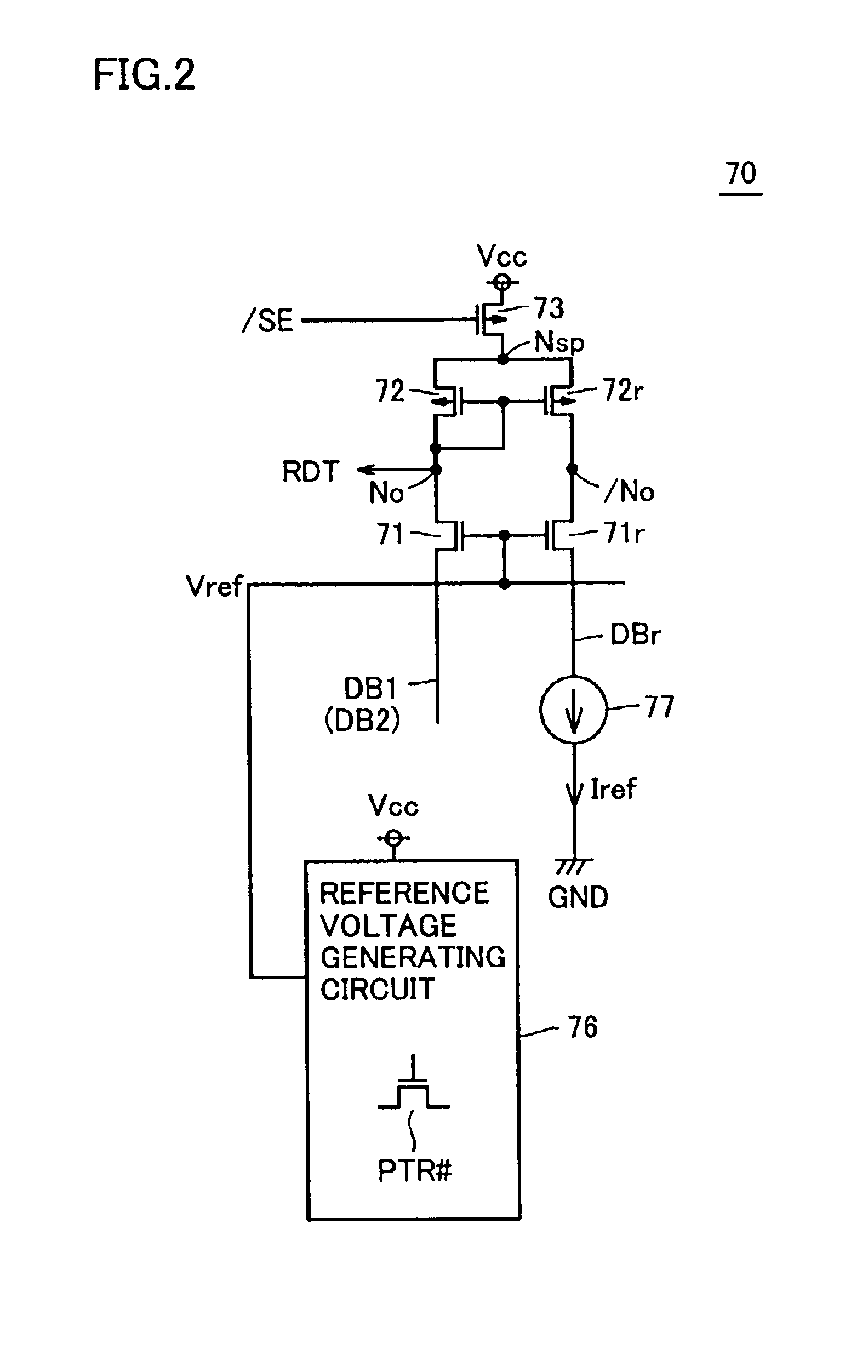Thin film magnetic memory device suppressing resistance of transistors present in current path
a magnetic memory and transistor technology, applied in semiconductor devices, digital storage, instruments, etc., can solve the problems of data read adversely, data operation may consume time, etc., and achieve the effect of suppressing the channel resistance of transistors, reducing the rc load in the read current path, and reducing the resistance of transistors
- Summary
- Abstract
- Description
- Claims
- Application Information
AI Technical Summary
Benefits of technology
Problems solved by technology
Method used
Image
Examples
first embodiment
Referring to FIG. 1, an MRAM device 1 according to the first embodiment of the present invention includes a memory cell array 10 formed with a plurality of MTJ memory cells MC arranged in n rows and m columns (n, m: a natural number), a row decoder 20 performing row select in memory cell array 10 based on a row address RA, and a column decoder 25 performing column select in memory cell array 10 based on a column address CA.
In memory cell array 10, read word lines RWL1-RWLn, digit lines DL1-DLn, and source voltage lines SL1-SLn are disposed corresponding to a memory cell row respectively, and bit lines BL1-BLm are provided corresponding to a memory cell column respectively. In the following, read word lines RWL1-RWLn, digit lines DL1-DLn, bit lines BL1-BLm, and source voltage lines SL1-SLn are collectively denoted as read word line RWL, digit line DL, bit line BL, and source voltage line SL, respectively. In addition, binary states, that is, a high voltage state (power supply voltage...
second embodiment
Referring to FIG. 7, an MRAM device 2 according to the second embodiment is different from MRAM device 1 according to the embodiment shown in FIG. 1 in that it further includes read gate transistors RG1-RGm, and has a different connection configuration of bit line BL with data buses DB1 and DB2. Moreover, MRAM device 2 is different in that a sense amplifier circuit 70# replaces sense amplifier 70 detecting the storage data based on the voltage or the current that appears in data bus DB1 or DB2.
In the configuration according to the second embodiment, column select gate transistors CSG1-CSGm are electrically coupled between corresponding bit lines BL1-BLm and power supply voltage Vcc, respectively. Since on / off of column select gate transistors CSG1-CSGm is controlled in a manner similar to FIG. 1, detailed description thereof will not be repeated.
Read gate transistors RG1-RGm are electrically coupled between a prescribed one of data buses DB1 and DB2 and ground voltage GND, and the g...
PUM
 Login to View More
Login to View More Abstract
Description
Claims
Application Information
 Login to View More
Login to View More - R&D
- Intellectual Property
- Life Sciences
- Materials
- Tech Scout
- Unparalleled Data Quality
- Higher Quality Content
- 60% Fewer Hallucinations
Browse by: Latest US Patents, China's latest patents, Technical Efficacy Thesaurus, Application Domain, Technology Topic, Popular Technical Reports.
© 2025 PatSnap. All rights reserved.Legal|Privacy policy|Modern Slavery Act Transparency Statement|Sitemap|About US| Contact US: help@patsnap.com



